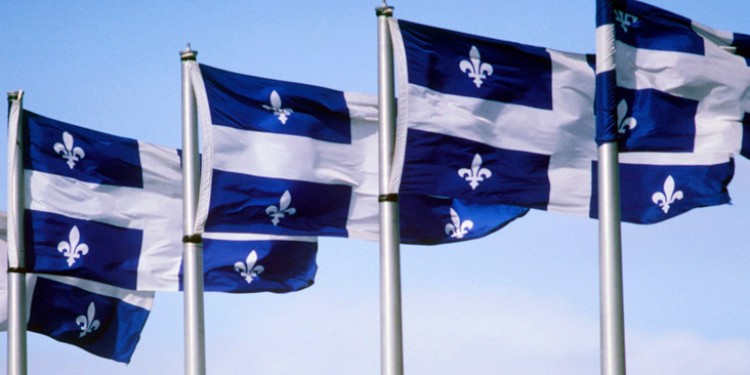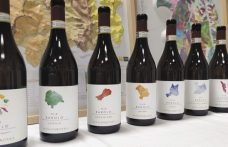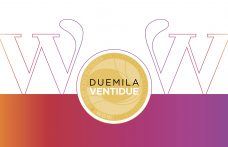
Blind tasting of SAQ and Italian bestsellers

Dear friends, this article is dedicated to a blind tasting I took part in both as a journalist and a MW student. It was published in my column “Diary of a student” in the last issue of Civiltà del bere. It was an interesting experience for putting myself to the test. I am pleased to be able to share it with you. Andrea Lonardi, agronomist and director of Bertani Domains, is a MW student and so this year he has entered into the infernal circle of the mad that drive a thousand kilometres to taste 12 wines. He organised a tasting himself, in Montalcino on 25th September, where I went straight from Milan because it seemed interesting. The idea was to discuss wines that clean out an important market like the Canadian one. How do you put Italian products on the shelf next to American or Spanish bestsellers? Do mid-range global wines have a soul or have they sold it to the market?
With these philosophical (and practical) questions in mind, we got together to taste 12 reds, rigorously blind. All we knew was that there were some of SAQ’s (the monopoly that runs the market in Quebec) best selling wines in the group and other wines from the Bertani group.
Here are the wines and the results. I recommend reading the description first and to “reveal” the wines (listed at the end) only afterwards, as if we were accompanying you through a “dry tasting” – i.e. with a written description of the main characteristics of the wines – in the style of MW students (I said “style”, but obviously with all my faults, otherwise I would already be a MW!). I have also left the errors of assessment, as they are interesting to understand how you can confuse grapes and countries, especially if wines are created “at the drawing board”, or rather in the cellar, and lose any identity of variety and territory.
1. The colour is intense. It is not excessive on the nose, elegant, European in style, but from a modern viticultural area, as the clean aromas and elegance of wood demonstrate, with a slight toasty overtone. The ripe fruit from a warm climate is striking. Complex with hints of spice, cocoa and orange peel. The tannins are clear, but supple, good acidity, length, balance and a biting finish. Reminiscent of Sangiovese, without the dusty notes of Chianti, and the deep ruby colour could show the presence of an international variety. The high alcohol content confirms a warm origin.
2. A clear, translucent red, already tending to garnet, from a Pinot Noir, Nebbiolo or Sangiovese monovarietal. The bouquet is delicate, not very intense, but complex, with a European stamp. Overtones of oxidation emerge but are well supported by fruit, strawberries, orange peel, leather and tobacco. The palette takes me to Tuscany, to the world of Sangiovese. The plentiful, tangy tannins and high acidity confirm the variety. The elegance and complexity lead us to a classic area, Chianti, Montalcino, but tending more to the latter for the ripe fruit and the density of the wine.
3. A bright, but not particularly intense, ruby colour. Polished aromas, from the Old World, cherry, coffee and tobacco. Not particularly precise. The prevalence of red fruits recalls Corvina. The fruitiness is confirmed on the palate, the tannins are medium and supple, like the acidity, confirming the idea of Corvina, and a “ripasso” method for the wine’s silkiness and roundness.
4. Bright in appearance. An elegant nose of medium intensity, European. Hints of cherries, remarkably fresh on the nose. Again reminiscent of Corvina Veronese. Extremely round on the palate, medium and supple tannins, medium acidity. The finish is crisp and slightly herbaceous. A kind of very modern ripasso.
5. Intense ruby, young. Intense, fruity, direct aroma. Ripe red fruit, strawberries, spices. It could be a blend of international grapes. From the New World, from a warm climate. Potent tannins, intense spices, with an incense finish. Lingering.
6. Bright red without nuances of oxidation. Spicy, intense, full aromas, coffee. Medium tannins, very soft, medium acidity. Reminiscent of Merlot, probably blended with other grapes. Round, but not very lingering. Old World in style, could be Italian.
7. Dark colour. Aroma of dark fruit with an excessive scent of burnt rubber. Probably international grapes, rather indefinable. The tannins are rich, lingering, acidity is rather high, strong alcohol content: from an area with a mild climate, such as South Africa, where smoky notes often emerge.
8. Light ruby with purplish highlights. Fruity on the nose, direct, New World style, reminiscent of California. Aromas of caramel, plum and vanilla on the nose. Very polished and woody. A wine created in the cellar. Medium tannins and acidity. Red fruits and soft notes reminiscent of Merlot. Considerable residual sugar, confirming a New World style.
9. Rather dark red. Markedly fruity, ripe fruit, raspberries and plum jam. Medium tannins, restrained acidity. The softness brings to mind Merlot and the ripe fruit a hot country, like central Australia. It is an imprecise, unbalanced wine.
10. A rather translucent colour. The intense, not well-defined, though fruity aromas, lead us to an emerging country, but drawing inspiration from European winemaking, like California or Argentina. The spicy notes are reminiscent of Syrah, with a floral tone and slightly herbaceous. High residual sugar. Another “technological” wine, according to the concentrated and velvety style that has followed its precise consumer trend.
11. Intense ruby. Hints of blackberries, blueberries, with a veil of lactic nuances. Restrained aroma, European or “current” New World. The plentiful, tangy tannins and herbaceous finish could come from the use of Cabernet Sauvignon. Dry on the mouth, confirming a style between Italy and South America.
12. Bright and clear appearance. Strawberry, slightly herbaceous on the nose, toasty final note. On the palate it is fruity and soft, with medium tannins, high acidity and good body. It could recall a modern wine from southern Australia. As for the variety, it is reminiscent of a Cabernet Franc but less intense and with an extraordinarily light colour. On the whole it is a little illegible, but pleasant, balanced and well-orchestrated.
Here are the wines:
- Campo alla Sughera – Adèo, Bolgheri DOC 2011 (Cabernet Sauvignon and Merlot) 75/100
- Val di Suga – Vigna Spuntali, Brunello di Montalcino 2009 (Sangiovese) 90/100
- Bertani – Valpolicella Ripasso DOC 2011 (Corvina, Rondinella) 80/100
- Bertani – Novarè, Verona IGT 2013 (Corvina) 88/100
- Juan Gil – Jumilla Red Aragona, Spain 2012 (Monastrell aka Mourvèdre) 65/100
- U. Cesari – Liano, Rubicone IGT 2011 (Sangiovese and Cabernet Sauvignon) 73/100
- La Massa – Toscana IGT (Sangiovese, Merlot, Cabernet Sauvignon) 65/100
- Gallo – Apothic.red, California (Zinfandel, Merlot, Syrah, Cabernet Sauvignon) 65/100
- Jean Noël Bousquet – La Garnotte, Corbières AOC 2012 (Syrah, Carignano, Grenache) 55/100
- Menage a trois – Napa Valley St. Helena, 2012 (Zinfandel, Merlot, Cabernet Sauvignon) 70/100
- Donnafugata – Tancredi, Sicilia IGT 2010 (Nero d’Avola, Cabernet Sauvignon) 75/100
- San Leonino – Governo, Toscana IGT 2013 (Sangiovese) 80/100
See also ...




The battle continues with the new Chianti Gran Selezione
On 11th November, the Chianti Wine Consortium announced Read more
